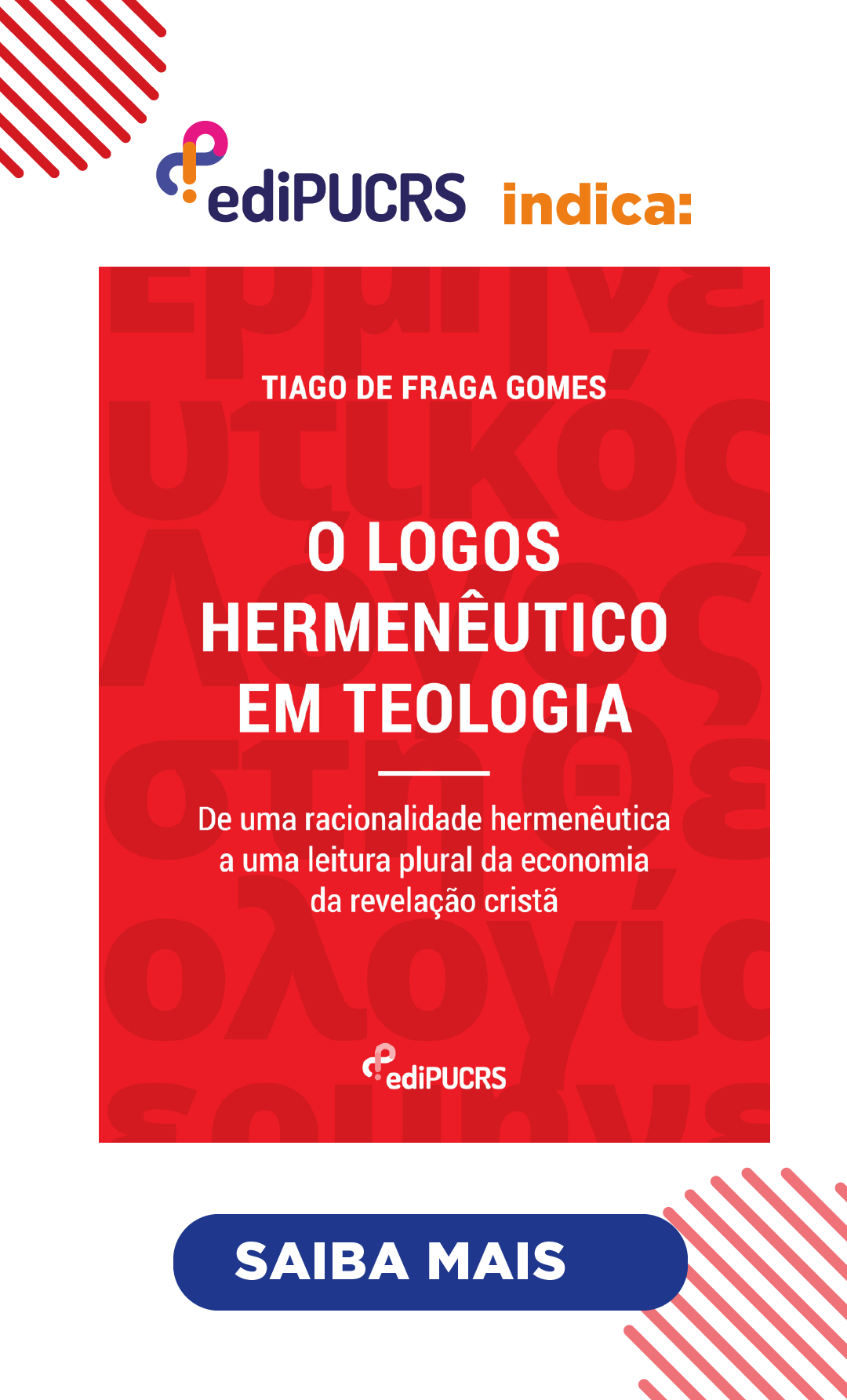Deborah's figure
An analysis of the memories contained in Judges 4-5
DOI:
https://doi.org/10.15448/0103-314X.2020.2.39484Keywords:
Deborah, Memories, Judges, North IsraelAbstract
Deborah’s memoirs in Judges 4-5 belong to two different conflicts over turbulent events of the 10th century BC, one in the Mount Tabor region and the other in the Valley of Jezrael. With the advent of Writing, North Israel produced what would be the book of the “saviors and liberators” of the people, a text that was later inserted in the memory of the South. To reach the objective of analyzing Deborah’s recollections contained in Judges 4-5 we discussed in the light of the theoretical references on the images contained in the text. The readings pointed to issues such as Deborah’s role in northern Israel society as she is called a mother, prophet, warrior, and judge. The symbolism behind the mountain judgment and under a date palm leads to questions about the forms of worship of that time, also the symbolism by the name of “bee” and the apiary in Tel Rehov. Evidence suggests that Deborah is a representative of female worship or even female deity of ancient Israel.
Downloads
References
ALMADA, S. Fazer justiça nos limites da anarquia – A profecia do livro dos Juízes. Revista de Interpretação Bíblica Latino-Americana/Ribla, Petrópolis, n. 60. p. 41-56, 2008.
BRENNER, Athalya (org.). Juízes a partir de uma leitura de Gênero. Trad. Fátima Regina Durães Marques. São Paulo: Paulinas, 2001. (Coleção A Bíblia: uma Leitura de Gênero)
CORDEIRO, A. L. A. Onde Estão as deusas? Asherá. A Deusa proibida, nas linhas e entrelinhas da Bíblia. São Leopoldo: CEBI, 2011.
CROATTO, S. A deusa Aserá no antigo Israel: A contribuição epigráfica da arqueologia. Revista de Interpretação Bíblica Latino-Americana, Petrópolis, n. 38, p. 32-44, 2002.
FINKELSTEIN, I.; SILBERMAN, N. A. A Bíblia não Tinha Razão. São Paulo: A Girafa Editora, 2003.
FINKELSTEIN, I. Compositional Phases, Geography and Historical Setting behind Judges 4-5 and the Location of Harosheth-ha-goiim. Scandinavian Journal of the Old Testament, v. 31, n. 1, p. 80-91, 2017. Disponível em: https://www.tandfonline.com/doi/abs/10.1080/09018328.2017.1301639. Acesso em 10 dez. 2019. https://doi.org/10.1080/09018328.2017.1301639
KAEFER, J. A. A Arqueologia e os novos paradigmas Bíblicos. Caminhos, Goiânia, v. 14, n. 1, p. 129-141, jan./jun. 2016/b. https://doi.org/10.18224/cam.v14i1.4831
KAEFER, J. A. Arqueologias das Terras da Bíblia II: Entrevista com os arqueólogos Israel Finkelstein e Amihai Mazar. São Paulo: Paulus, 2016a.
KAEFER, J. A. As “tribos de Israel”! Memórias remanescentes em Jz 5,14-18. Revista de Interpretação Bíblica Latino-Americana/Ribla, Petrópolis, n. 75, 2017.
LAMONTAGNE, N. The Song of Deborah (Judges 5): Meaning and Poetry in the Septuagint. Dissertation (Masters) -- The Catholic University of America, Washington, 2013.
LANOIR, C. Juízes. In: RÖMER, T.; MACCHI, J.-D.; N., C. (ed.). Antigo Testamento - História, escritura e teologia. São Paulo: Loyola, 2010. p. 322-337.
MATTOS, S. M. A influência das Deusas Asherah e Ishtar na construção da imagem materna de Javé em DêuteroIsaísas. Âncora, [S. l.], v. ix, a. 9, mar. 2014.
MAYFIELD, T. The Accounts of Deborah (Judges 4 5) in Recent Research. Currents in Biblical Research, [S. l.], 7.3, 2009, p. 306-305. https://doi.org/10.1177/1476993X09104456
OTTERMANN, M. A Deusa Inana-Ishtar – uma rival de YHWH? Considerações feministas sobre as Deusasárvore e o Deus único da Bíblia Hebraica. Hermenêuticas Bíblicas. In: I CONGRESSO BRASILEIRO DE PESQUISA BÍBLICA. OIKOS/OCG; ABIB, 2006. p. 136-145. PAREDES, J. C. R. G. Mariologia: Síntese Bíblica, Histórica e Sistemática. São Paulo: Editora Ave Maria, 2011.
RAINEY, Anson F. (org.). The El-Amarna Correspondence: a new edition of the Cuneiform Letters from the site of El-Amarna based on collations of all extant tablets. Tradução de Anson F. Rainey. Edição de William M. Schniedewind. Leiden: Brill, 2015. https://doi.org/10.1163/9789004281547
RÖMER, T. A Chamada História Deuteronomista: Introdução sociológica, histórica e literária. Trad. Gentil Avelino Titton. Petrópolis: Vozes, 2008.
RÖMER, T. A origem de Javé: O Deus de Israel e seu nome. São Paulo: Paulus, 2016.
SCHMID, K. História da Literatura do Antigo Testamento: uma introdução. Tradução de Uwe Wegner. São Paulo: Edições Loyola, 2013.
SCHROER, S. A caminho para uma reconstrução feminista da história de Israel. In: SCHOTTROFF, L.; SCHROER, S.; WACKER, M. Exegese Feminista: Resultados de pesquisas Bíblicas a partir da perspectiva de mulheres. São Leopoldo: ASTE/CEBI/Sinodal, 2008. p. 81-151.
SPRONK, K. Deborah, a Prophetess: the Meaning and Background of Judges 4:4-5. In: J.C. de Moor (ed.). The Elusive Prophet (OTS 45). Leiden: [s. n.], 2001. p. 232-242. VAN SETERS, J. Em Busca da História: Historiografia no mundo antigo e as origens da história bíblica. São Paulo: EDUSP, 2008.
YOUNG, I. Biblical Texts Cannot be Dated Linguistically. Hebrew Studies, [S. l.], v. 46, p. 341-351, 2005. https://doi.org/10.1353/hbr.2005.0038
Downloads
Published
Issue
Section
License
Copyright (c) 2020 Teocomunicação

This work is licensed under a Creative Commons Attribution 4.0 International License.
Copyright
The submission of originals to Teocomunicação implies the transfer by the authors of the right for publication. Authors retain copyright and grant the journal right of first publication. If the authors wish to include the same data into another publication, they must cite Teocomunicação as the site of original publication.
Creative Commons License
Except where otherwise specified, material published in this journal is licensed under a Creative Commons Attribution 4.0 International license, which allows unrestricted use, distribution and reproduction in any medium, provided the original publication is correctly cited.





